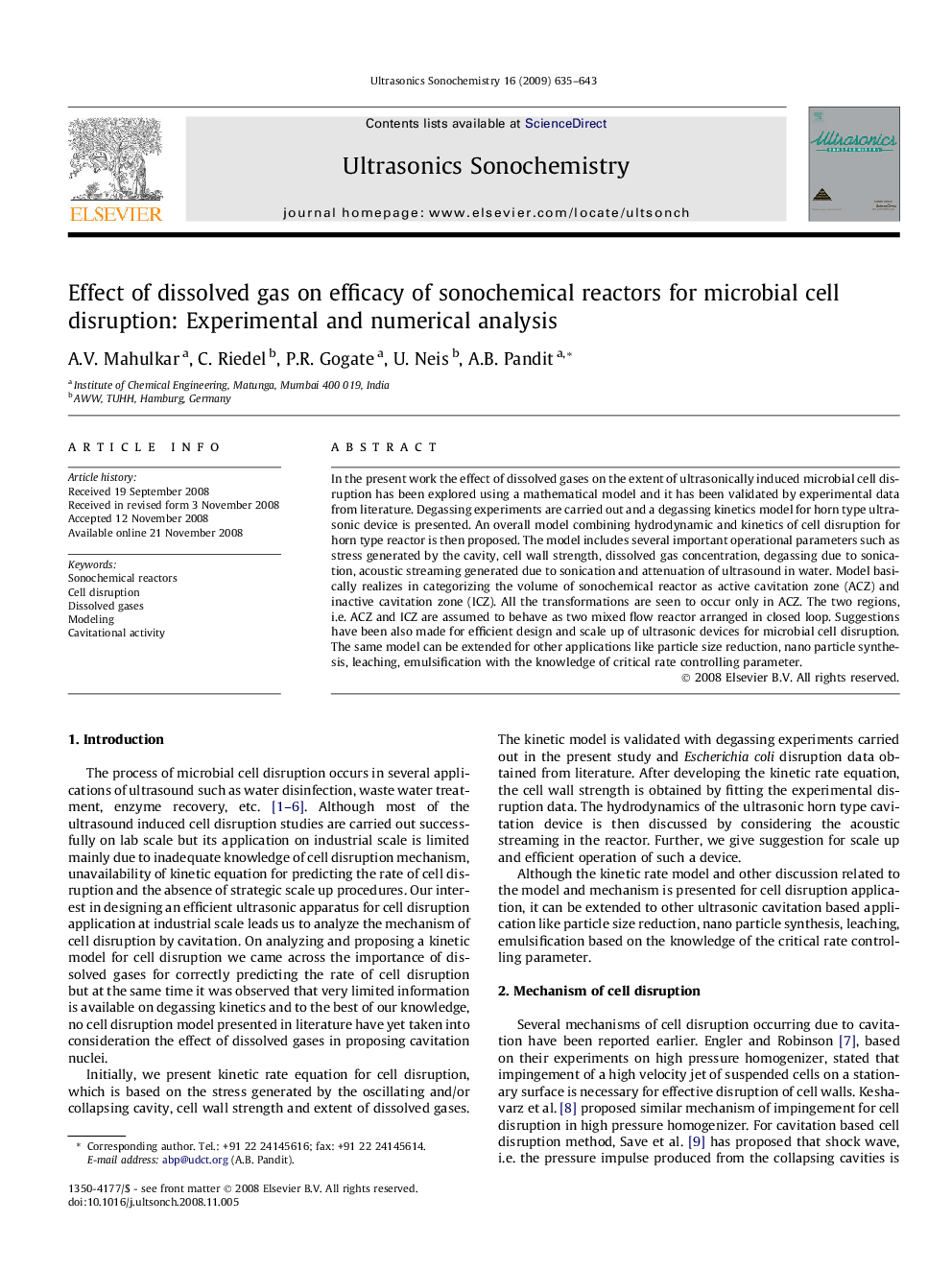| Article ID | Journal | Published Year | Pages | File Type |
|---|---|---|---|---|
| 1265819 | Ultrasonics Sonochemistry | 2009 | 9 Pages |
In the present work the effect of dissolved gases on the extent of ultrasonically induced microbial cell disruption has been explored using a mathematical model and it has been validated by experimental data from literature. Degassing experiments are carried out and a degassing kinetics model for horn type ultrasonic device is presented. An overall model combining hydrodynamic and kinetics of cell disruption for horn type reactor is then proposed. The model includes several important operational parameters such as stress generated by the cavity, cell wall strength, dissolved gas concentration, degassing due to sonication, acoustic streaming generated due to sonication and attenuation of ultrasound in water. Model basically realizes in categorizing the volume of sonochemical reactor as active cavitation zone (ACZ) and inactive cavitation zone (ICZ). All the transformations are seen to occur only in ACZ. The two regions, i.e. ACZ and ICZ are assumed to behave as two mixed flow reactor arranged in closed loop. Suggestions have been also made for efficient design and scale up of ultrasonic devices for microbial cell disruption. The same model can be extended for other applications like particle size reduction, nano particle synthesis, leaching, emulsification with the knowledge of critical rate controlling parameter.
